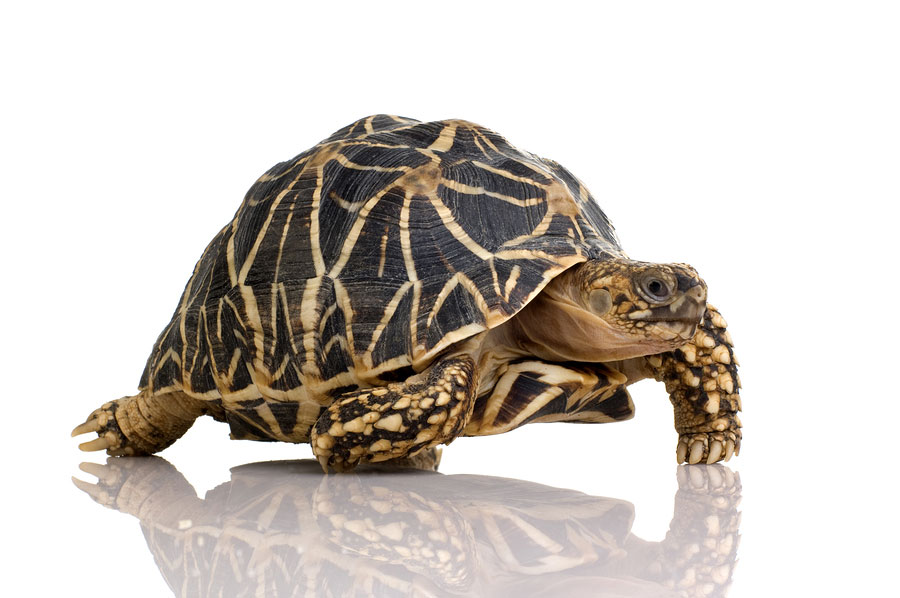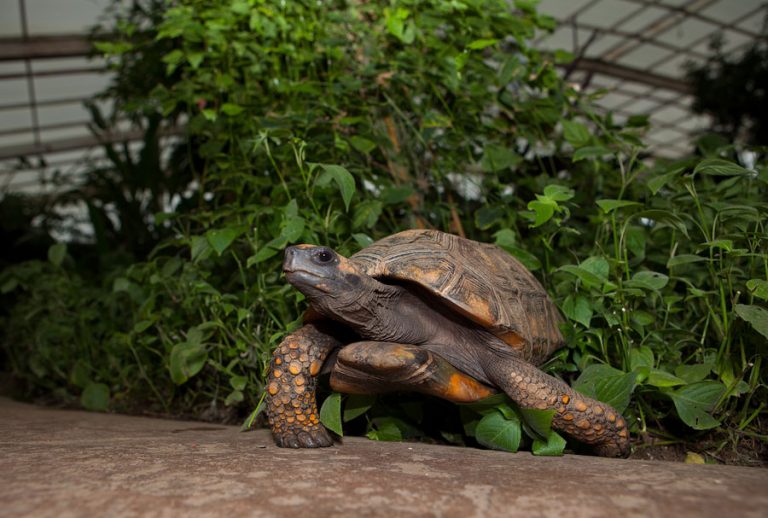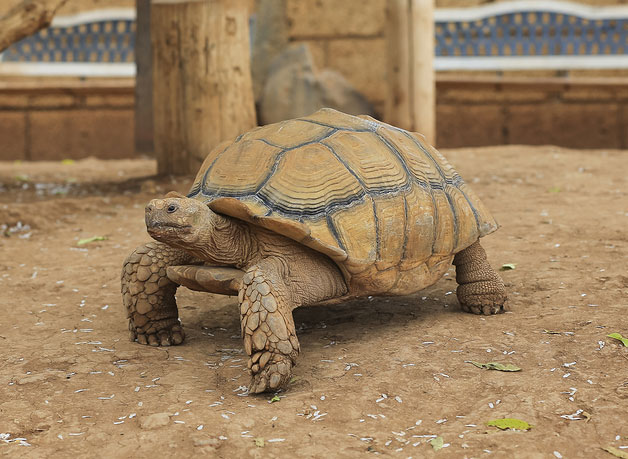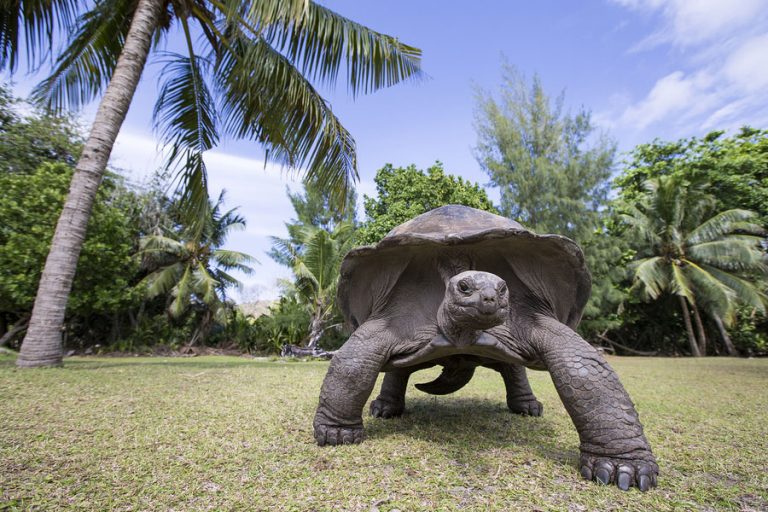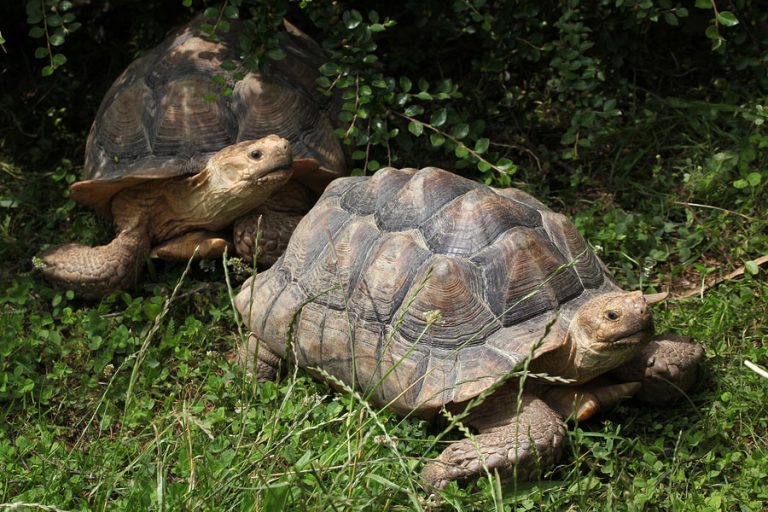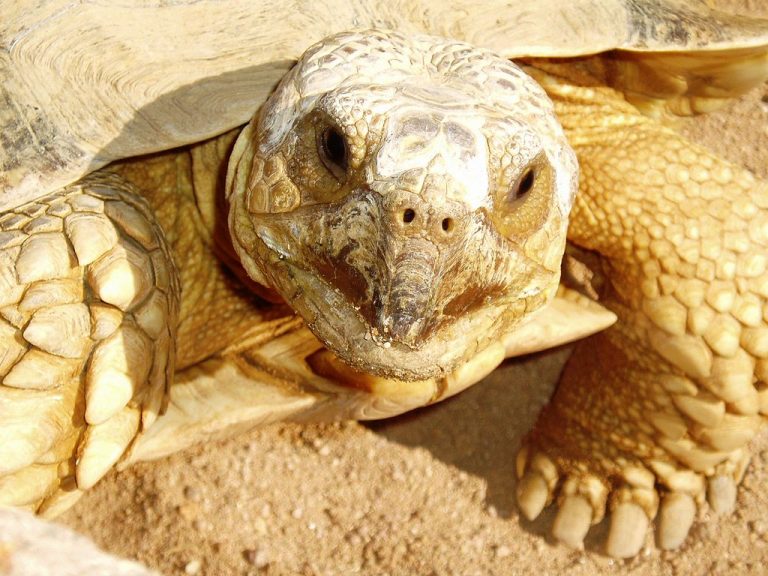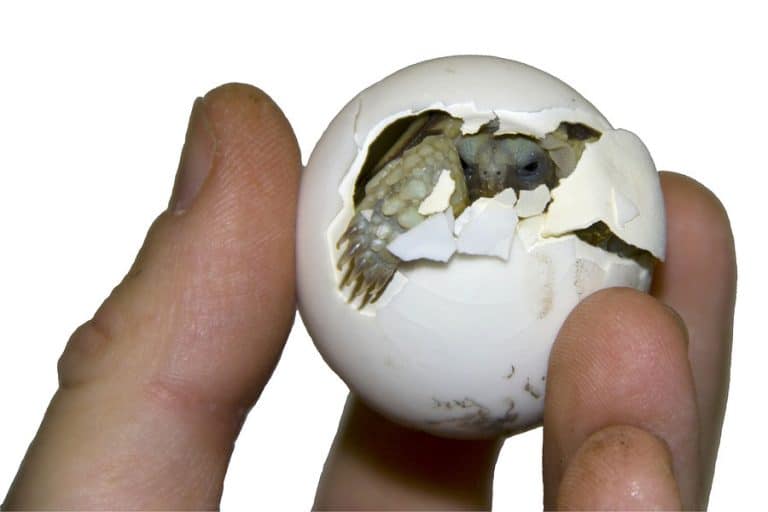Indian Star Tortoise
Scientific Classification
| Kingdom: | Animalia |
| Phylum: | Chordata |
| Class: | Sauropsida |
| Order: | Testudines |
| Suborder: | Cryptodira |
| Superfamily: | Testudinoidea |
| Family: | Testudinidae |
| Genus: | Geochelone |
| Species: | G. elegans |
| Binomial name: | Geochelone elegans |
Indian star tortoises belong to the species of tortoise Geochelone elegans. You can find this species in the dry areas and scrub forests of India as well as parts of Pakistan and Sri Lanka. Star tortoises from India are very popular in the exotic pet trade.
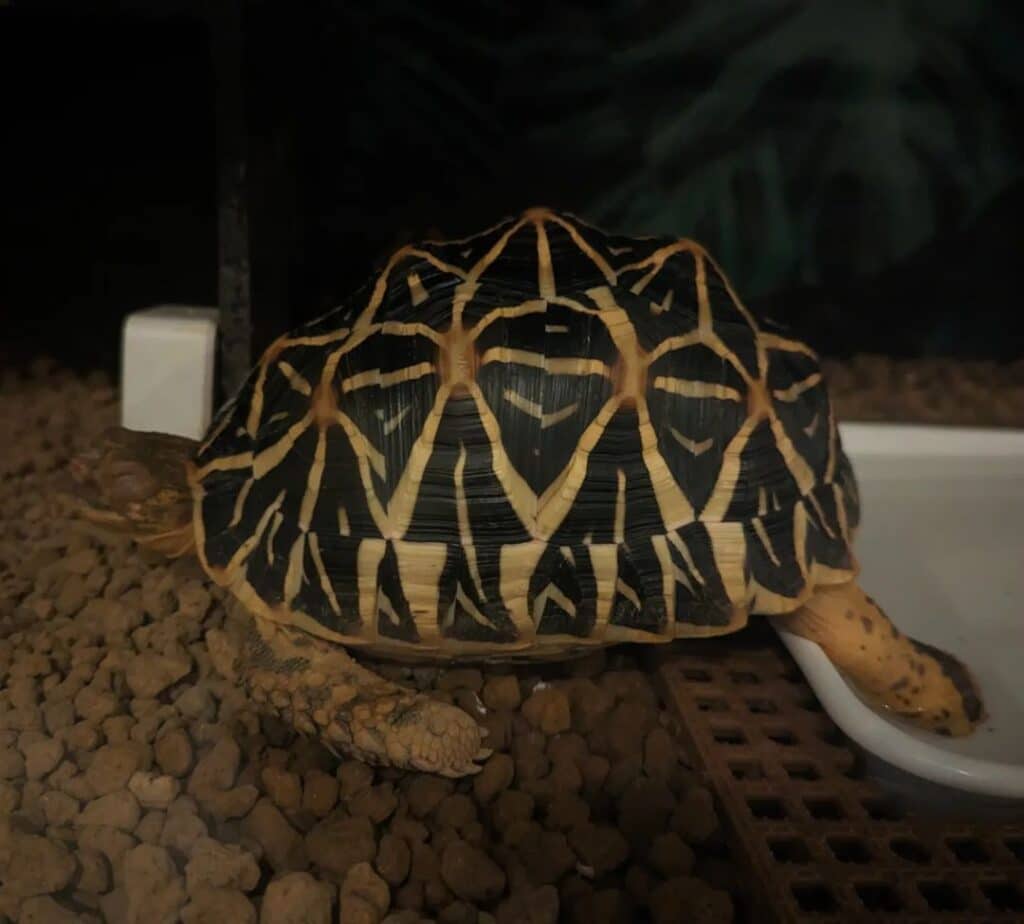
Anatomy and Morphology
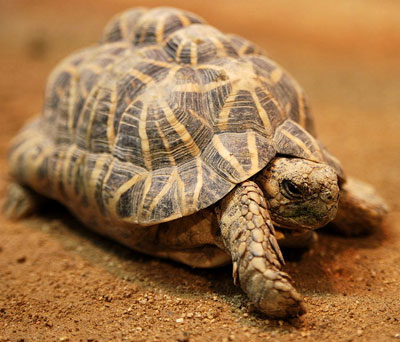
The Indian Star tortoise has a very convex carapaces or upper shell. The dorsal shields of the carapace frequently form humps. You will find that the lateral margins are almost vertical. The posterior margins are fairly expanded as well as serrated. The nuchal scute is absent. In the male, you can see that the supracaudal (the area above the tail) is not divided and curves inwards. The shields are concentrically striated (having lines, bands or grooves). These tortoises have moderate-sized heads with swollen, convex foreheads covered with a tiny irregular shield like tubercles. The carapace is black with an aerolae from which yellow streaks seem to radiate. There are numerous narrow streaks. The plastron or the bottom shell, likewise, has black and yellow radiating streaks. Indian stars can reach 10 inches in length.
The specific shape of the Indian star Tortoise seems adapted to assist the reptile to return to its original position if turned over. The designers of the gömböc (a shape that helped the body structure of some turtles to return to the position of equilibrium from an upside position) attribute this function to the Indian Star Tortoise, Scientists studied its similarity to the Indian star tortoises. They also studied some turtles and found that several of of them had self righting abilities like the Indian Stars.
The patterns are highly contrasting but is not continuous.. So it seems to break the outline when the reptile is in the shade of vegetation or grass. They are primarily herbivores, and feed on leaves, grass, fallen fruit and flowers. They will infrequently eat carrion. You should never feed them meat in captivity.
Sexual Dimorphism
Indian Starred Tortoises exhibit sexual dimorphism. Females are generally larger than the males. The plastrons of the females are much flatter than that of the males.
Range and Distribution
The star tortoises range all over India except lower Bengal and extend to Sindh province in Pakistan as well as Sri Lanka.
A large number of these species get into the illegal Wildlife trade in India. Not much study has been done on the wild populations of these reptiles and the effect of trade on these creatures.
As a Pet
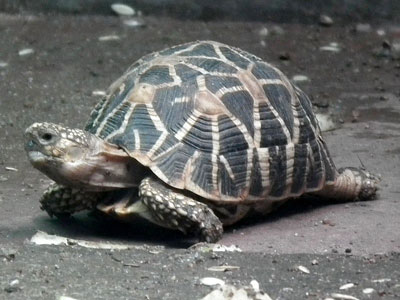
Indian Star Tortoises are not really the best choice as first tortoise pets. However, they do quite well if you provide them appropriate diet and the right environmental conditions.
Food
• Food items high in fiber content are ideal for your pets. Grasses, leaves, weeds, salad hay, flowers, and cacti, fit the bill.
• Remember that grocery greens are at best the secondary choice.
• You should feed your pets with fiber-rich, low protein, low fat diets.
You should not feed them too much fruit.
• Please ensure that you do not feed your pets any animal proteins
• You must feed them as large and as wide a range of plants as possible.
Supplements
Opinions do vary regarding the food supplements you should feed them. Provide them calcium powder once or twice a week. You can give them multivitamin supplements once or twice a month. Female tortoises that lay eggs and baby tortoises need frequent food supplementation. You need not provide vitamin D3 supplements if the pets are kept outdoors.
Housing
Remember that natural sunlight is the best source of UVB and that it comes free. Keep your pets outdoors as much as possible for maximum UVB exposure and exercise. If you live in warmer climates, you can keep the adults outside all the time, if you can provide heated houses for cooler nights. You can put the babies out on warm, sunny, days. Just make sure that the minimum temperature is around 70 – 75 degree F.
Enclosures
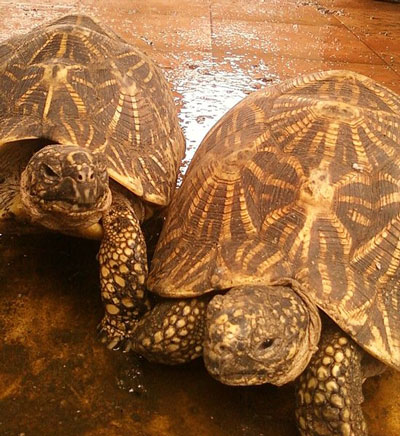
The enclosure that you provide for your pets should have many shady areas. Keep the enclosure as large as possible. Provide plenty of bushes and Hides. Place a shallow Dish of water in a shady place to keep the tortoises cool in hot weather. Cover the top of the enclosure for babies to protect them from predators. Star Tortoises are not expert climbers or diggers. They will not escape as long as the enclosure wall is high enough. You should take care to provide sunny slopes and raised laying beds for adult, egg-layers. You can plant the enclosure with a lot of edible greenery. Keep out toxic plants and those you are not sure about.
Indoor Housing
Large, plastic tubs with open tops and tortoise tables made of wood are very much in demand for adult tortoises of this species.Keep the vivariums where you raise young tortoises partially or completely closed. This will provide them with the warmth and the humidity they need. Do not allow your tortoises to hibernate. Take care to keep them warm all round the year. Avoid cold and damp conditions. These tortoises thrive well in warm and humid conditions.
Lighting
If your tortoise does not have much of an access to an outdoor enclosure, you can arrange UVB lighting (Reptile) for their indoor use. You can either opt for mercury lamp or fluorescent tubes.
Heating
Make sure that there is a bulb designed for day time basking, like MVBs or heat bulbs. If necessary, you can use ceramic emitters or radiant panels in case you have to provide more heat at night. The enclosure must be dark in the night.
Substrate
The popular indoor substrates are Cypress mulch, Fir or Orchid Bark, Soil and sand mix, coconut coir and sand mix, plain soil, and wet paper towels for the babies. In the cases of all enclosures where the substrates are loose, you can provide food for the tortoises in flat trays, tiles or paper plates. This will prevent the tortoise from the accidental intake of the substrate along with food.
Caution
Indian Stars have the dubious reputation of being rather difficult to maintain in captivity. This is especially true if your pet is not a captive bred one. A wild tortoise caught illegally may already be sick when you collected it. It may become sick during transportation due to cold conditions as well as exposure to other creatures. Most tortoises carry quite a lot of parasites and protozoa. The stress of transport and change in living conditions can cause the parasite percentages to soar. These untreated infestations can result in the death of the tortoise.

Having discovered a fondness for insects while pursuing her degree in Biology, Randi Jones was quite bugged to know that people usually dismissed these little creatures as “creepy-crawlies”.

